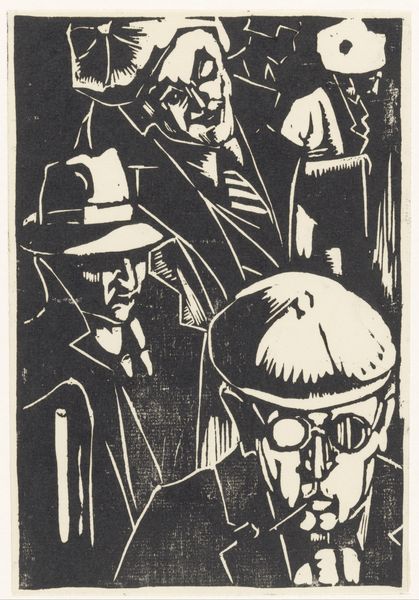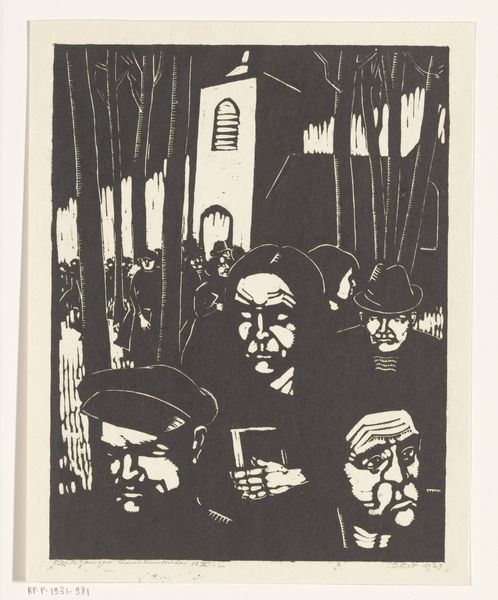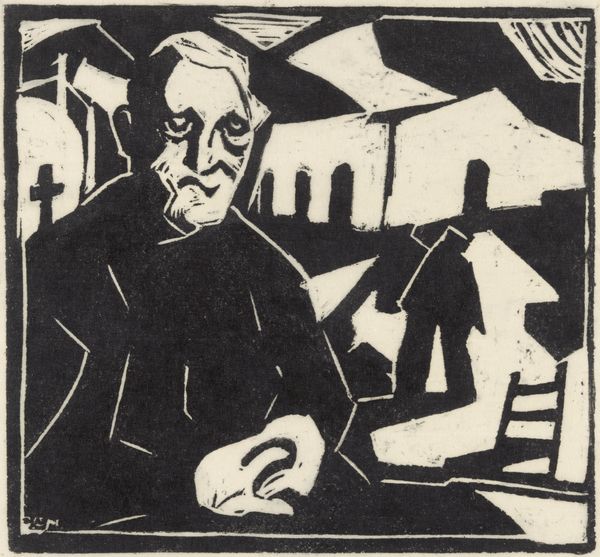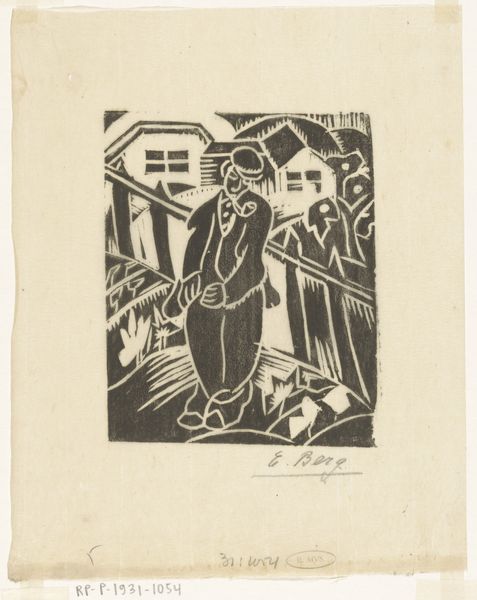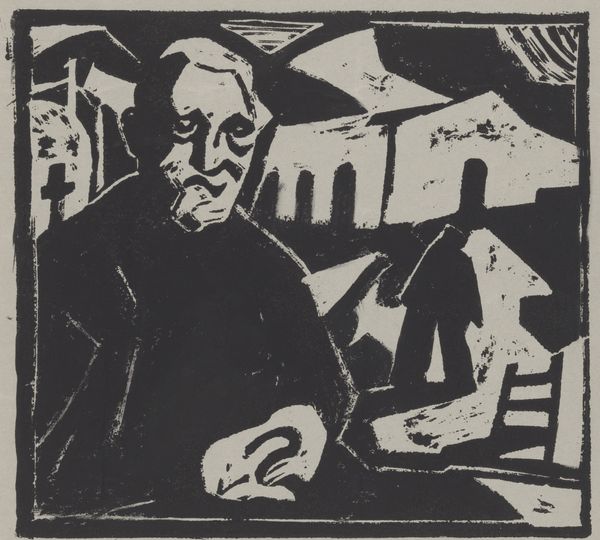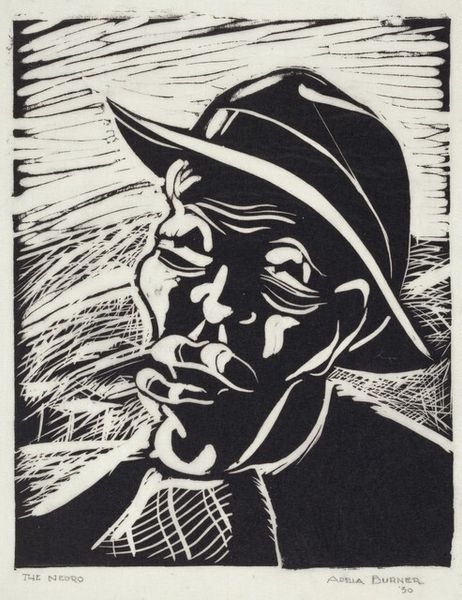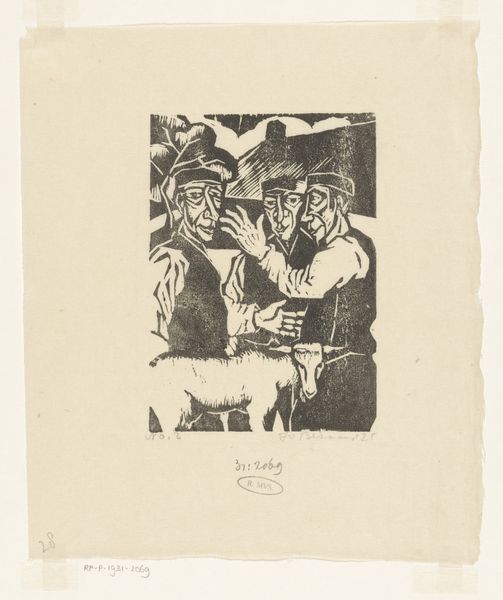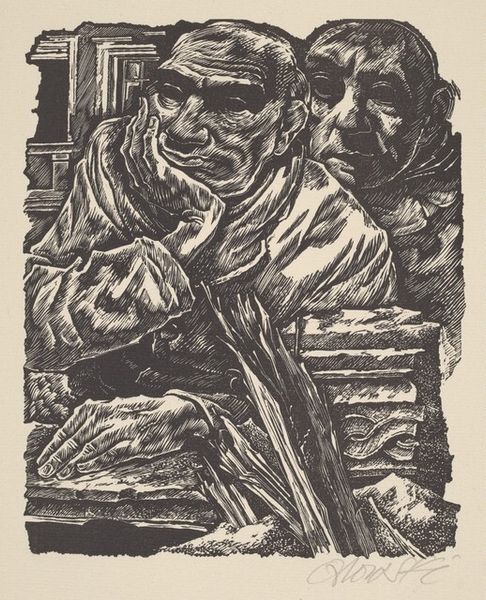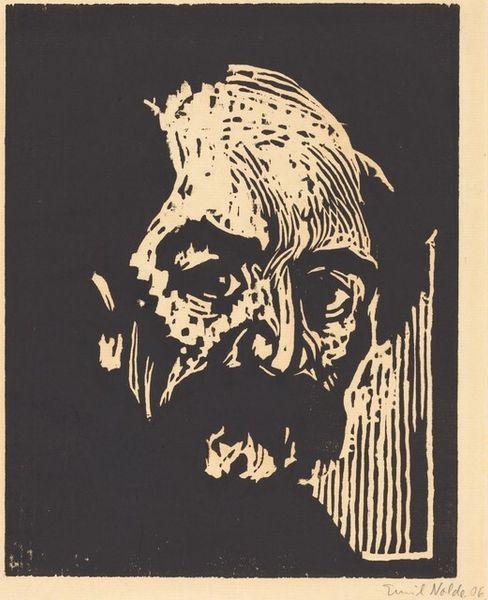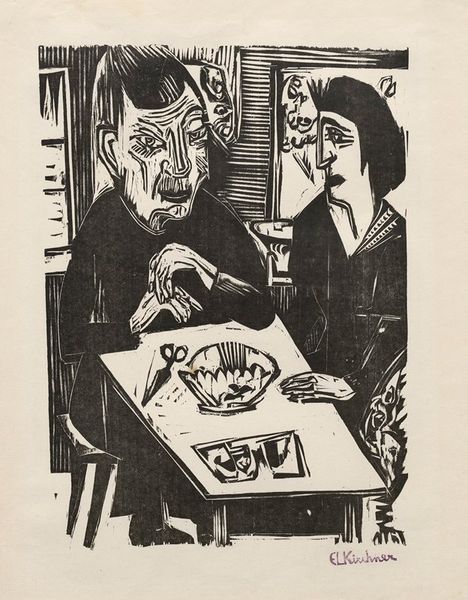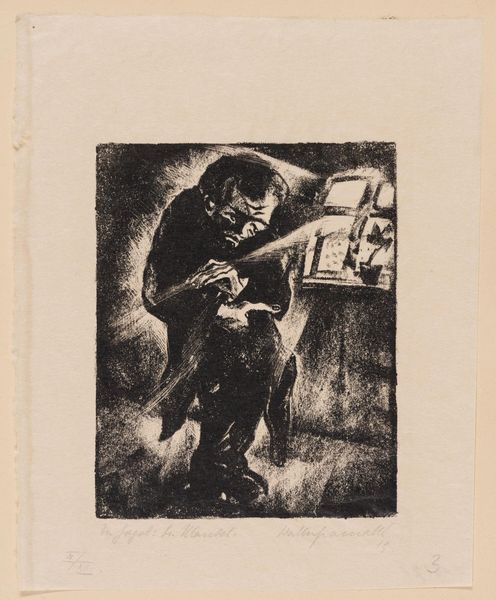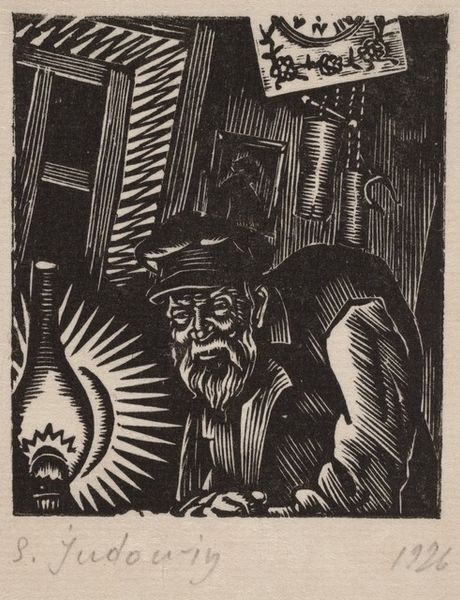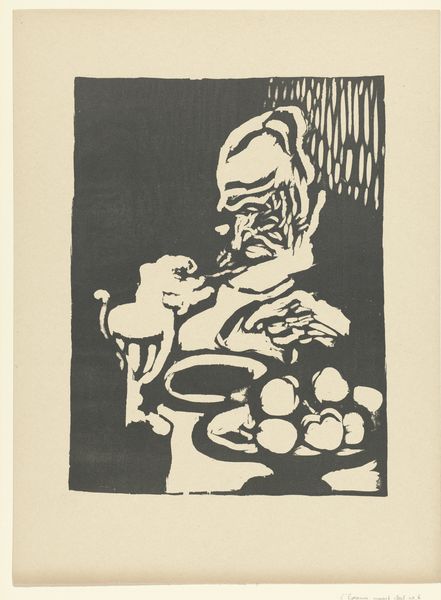
Dimensions: height 232 mm, width 206 mm
Copyright: Rijks Museum: Open Domain
Curator: This compelling woodcut by Louis Cardinaals, titled "Zondag te Koudekerke," was created in 1932 and is currently housed in the Rijksmuseum collection. Editor: Immediately, the high contrast grabs my attention. There's a severity in the faces, amplified by the stark black and white. It feels almost… oppressive? Curator: Indeed. Let’s consider the woodcut medium. Carving demands direct engagement—force, pressure, removal of material. This process isn’t passive; Cardinaals actively shapes the image by physically engaging with the block. Each cut signifies a deliberate choice, a reduction of complexity to its most fundamental form. Editor: Right, and in terms of social context, the sharp contrasts could reflect the social and economic hardships of the 1930s. There's an almost documentary quality to it. The woman's traditional headwear and the man's stern gaze… it hints at a certain cultural rigidity, perhaps even social conformity in the face of external pressures. Curator: Consider, too, the relationship between foreground and background. The landscape seems to push forward, creating an almost claustrophobic effect. He employs bold, graphic lines. Editor: The stark lines, however, contribute to its emotional intensity. And the lack of shading denies any sense of gentleness. Everything is bold, unforgiving. I'm interested in exploring the potential link with Expressionism, perhaps even the New Objectivity movement—questioning traditional power structures within this small community. Curator: While the subject appears regional, even mundane, the technique elevates it. It speaks to a dedication of craft and skill but without artifice or unnecessary flourish. The image becomes more about the process of seeing, of physically engaging with the world to create a representation, rather than the specific scene depicted. Editor: Ultimately, what resonates most is the tension simmering beneath the surface of what might seem a simple, quaint depiction. The weight of tradition, perhaps the constraints of their environment, captured in that striking, deliberate carving. It is heavy with unspoken stories. Curator: Precisely. By exploring both the creation and context of this work, we get closer to seeing both the tangible process behind the print and how art interacts within larger social concerns.
Comments
No comments
Be the first to comment and join the conversation on the ultimate creative platform.
